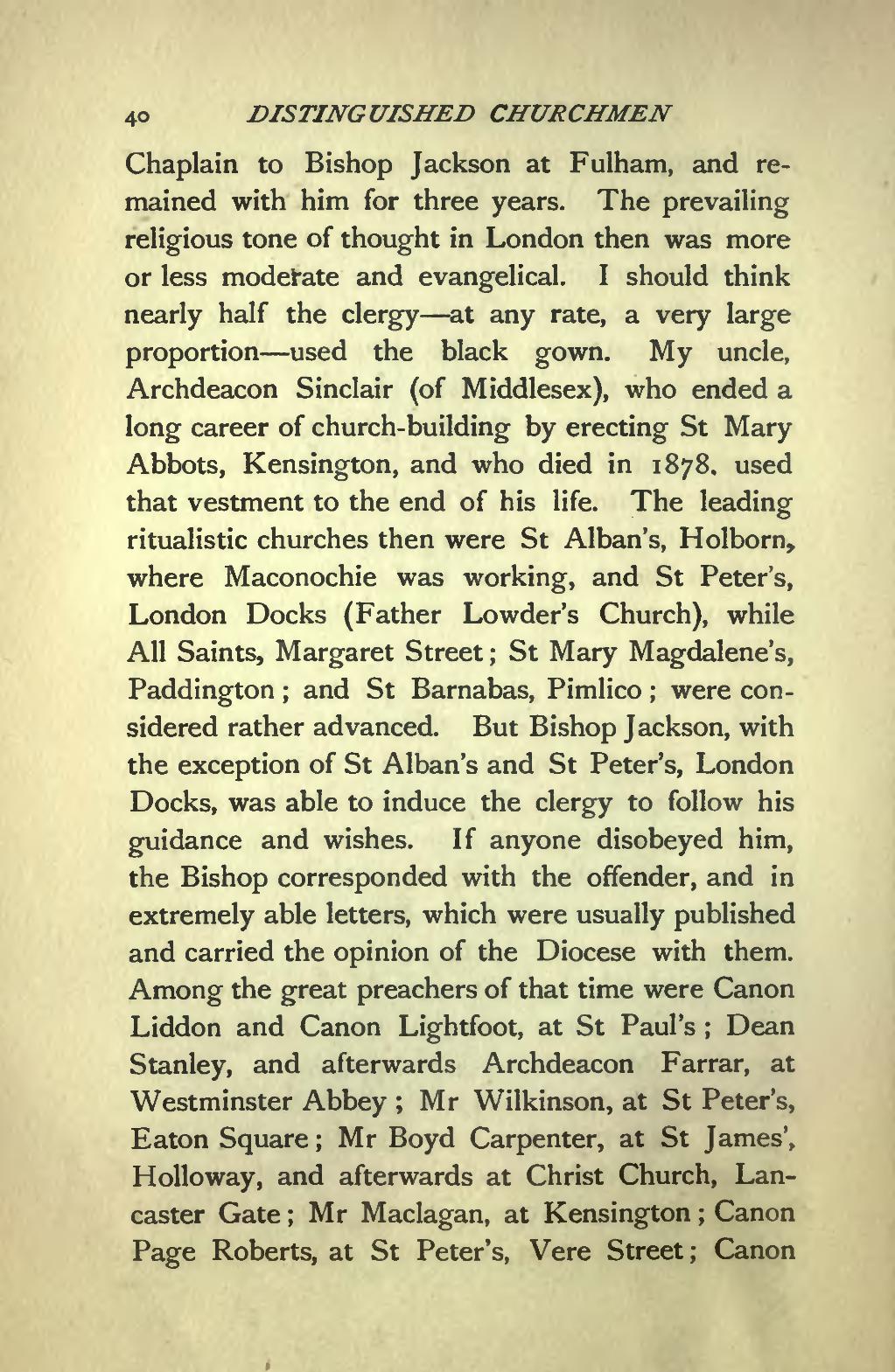Chaplain to Bishop Jackson at Fulham, and remained with him for three years. The prevailing religious tone of thought in London then was more or less moderate and evangelical. I should think nearly half the clergy—at any rate, a very large proportion—used the black gown. My uncle, Archdeacon Sinclair (of Middlesex), who ended a long career of church-building by erecting St Mary Abbots, Kensington, and who died in 1878, used that vestment to the end of his life. The leading ritualistic churches then were St Alban's, Holborn, where Maconochie was working, and St Peter's, London Docks (Father Lowder's Church), while All Saints, Margaret Street; St Mary Magdalene's, Paddington; and St Barnabas, Pimlico; were considered rather advanced. But Bishop Jackson, with the exception of St Alban's and St Peter's, London Docks, was able to induce the clergy to follow his guidance and wishes. If anyone disobeyed him, the Bishop corresponded with the offender, and in extremely able letters, which were usually published and carried the opinion of the Diocese with them. Among the great preachers of that time were Canon Liddon and Canon Lightfoot, at St Paul's; Dean Stanley, and afterwards Archdeacon Farrar, at Westminster Abbey; Mr Wilkinson, at St Peter's, Eaton Square; Mr Boyd Carpenter, at St James', Holloway, and afterwards at Christ Church, Lancaster Gate; Mr Maclagan, at Kensington; Canon Page Roberts, at St Peter's, Vere Street; Canon
